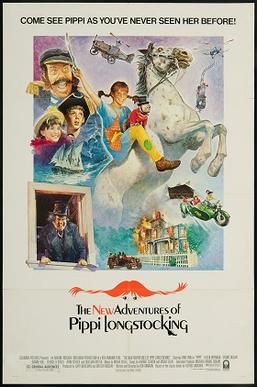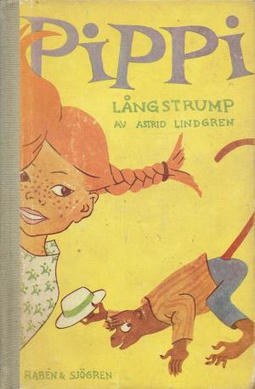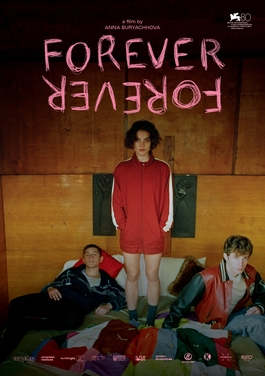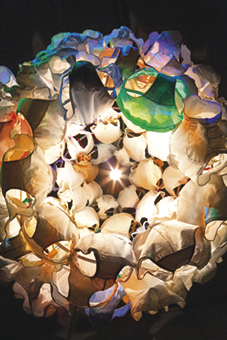Video art is an art form which relies on using video technology as a visual and audio medium. Video art emerged during the late 1960s as new consumer video technology such as video tape recorders became available outside corporate broadcasting. Video art can take many forms: recordings that are broadcast; installations viewed in galleries or museums; works either streamed online, or distributed as video tapes, or on DVDs; and performances which may incorporate one or more television sets, video monitors, and projections, displaying live or recorded images and sounds.

Astrid Anna Emilia Lindgren was a Swedish writer of fiction and screenplays. She is best known for several children's book series, featuring Pippi Longstocking, Emil of Lönneberga, Karlsson-on-the-Roof, and the Six Bullerby Children, and for the children's fantasy novels Mio, My Son; Ronia the Robber's Daughter; and The Brothers Lionheart. Lindgren worked on the Children's Literature Editorial Board at the Rabén & Sjögren publishing house in Stockholm and wrote more than 30 books for children. In 2017, she was calculated to be the world's 18th most translated author. Lindgren had by 2010 sold roughly 167 million books worldwide. In 1994, she was awarded the Right Livelihood Award for "her unique authorship dedicated to the rights of children and respect for their individuality." Her opposition to corporal punishment of children resulted in the world's first law on the matter in 1979, while her campaigning for animal welfare led to a new law, Lex Lindgren, in time for her 80th birthday.

Senta Verhoeven is an Austrian-German actress. She received many award nominations for her acting in theatre, film and television; her awards include three Bambi Awards, two Romys, an Adolf Grimme Award, both a Deutscher and a Bayerischer Fernsehpreis, and a Goldene Kamera.
Video installation is a contemporary art form that combines video technology with installation art, making use of all aspects of the surrounding environment to affect the audience. Tracing its origins to the birth of video art in the 1970s, it has increased in popularity as digital video production technology has become more readily accessible. Today, video installation is ubiquitous and visible in a range of environments—from galleries and museums to an expanded field that includes site-specific work in urban or industrial landscapes. Popular formats include monitor work, projection, and performance. The only requirements are electricity and darkness.

Karin Inger Monica Nilsson is a Swedish actress and singer. She is a former child actress. She is primarily known for her portrayal of Pippi Longstocking in the Swedish-produced TV series of the same name during 1969 which was compiled, re-dubbed into German and later also in English and many other languages, and released as two feature films in 1969. In 1970, she reprised her role of Pippi in two feature films. In 2005, she was working as a secretary in Stockholm, occasionally taking small stage roles.

Pipilotti Elisabeth Rist is a Swiss visual artist best known for creating experimental video art and installation art. Her work is often described as surreal, intimate, abstract art, having a preoccupation with the female body. Her artwork is often categorized as feminist art.

Tamara Erin Klicman, known professionally as Tami Erin, is an American former actress and former model. She is best known for her role as Pippi Longstocking in the 1988 movie The New Adventures of Pippi Longstocking, released in movie theaters worldwide in 13 languages by Columbia Pictures.

The New Adventures of Pippi Longstocking is a 1988 musical adventure film written and directed by Ken Annakin, based on the Pippi Longstocking book series by Astrid Lindgren. It is a Swedish-German-American joint venture produced by Columbia Pictures, Longstocking Productions, and Svensk Filmindustri. While the title suggests a continuation of previous entries, it is in fact a remake of the original story.
Gry Wernberg Bay is a Danish actress. She is best known for her sexually provocative starring role in the feature film All About Anna (2005).

Pippi Longstocking is a 1997 animated musical adventure comedy film co-directed by Michael Schaack and Clive A. Smith, and written by Catharina Stackelberg, based on the eponymous children's books by Astrid Lindgren. A joint Swedish-German-Canadian venture produced by Svensk Filmindustri, IdunaFilm, TFC Trickompany and Nelvana, the film features the voices of Melissa Altro, Catherine O'Hara, Gordon Pinsent, Dave Thomas, Wayne Robson and Carole Pope.

Birgit Minichmayr is an Austrian actress born in Linz, Austria. She studied drama at the Max Reinhardt Seminar in Vienna. For her work in Maren Ade's film Everyone Else she won Silver Bear for Best Actress at 59th Berlin International Film Festival. She is the only Austrian actress to win this award in history of the festival and the first Austrian actress to win best actress award at a major European film festival since 1956. She worked with several major European directors including Michael Haneke, Tom Tykwer and Jessica Hausner.

Pippi Longstocking is a Swedish children's novel by writer Astrid Lindgren, published by Rabén & Sjögren with illustrations by Ingrid Vang Nyman in 1945. Translations have been published in more than 40 languages, commonly with new illustrations.
Fay Masterson is a British actress. She is best known for her roles as Head Girl in The New Adventures of Pippi Longstocking, Andrea Garnett in The Last Ship, and as Gail Jones in Fifty Shades Darker and Fifty Shades Freed.

Annelies Štrba is a Swiss multimedia artist, who lives in the Zurich metropolitan area. She works with video, photography, and digital media to approach her subjects, which range from domestically themed images, portraiture, and both urban and natural landscapes.
Dalpalan (born Kang Ki-young on July 16, 1966) is a South Korean film score composer and music director. He was a first-generation Korean heavy metal and electronic musician and a former member of the bands Sinawi, H2O and Pipi Band.

Ever Is Over All is an audiovisual installation by Swiss artist Pipilotti Rist created in 1997.

Forever-Forever is a 2023 coming-of-age drama film co-written and directed by Anna Buryachkova at her feature film debut. A co-production between Ukraine and Netherlands, it premiered in the Orizzonti Extra section at the 80th Venice International Film Festival.

TV-Lüster (1993) is a 6-channel video installation by Swiss multimedia artist Pipilotti Rist from 1993. It has been on permanent display in the hall of the Kunstmuseum St. Gallen since 1994.

Homo Sapiens Sapiens is an audiovisual installation by the Swiss artist Pipilotti Rist created in 2005.
















